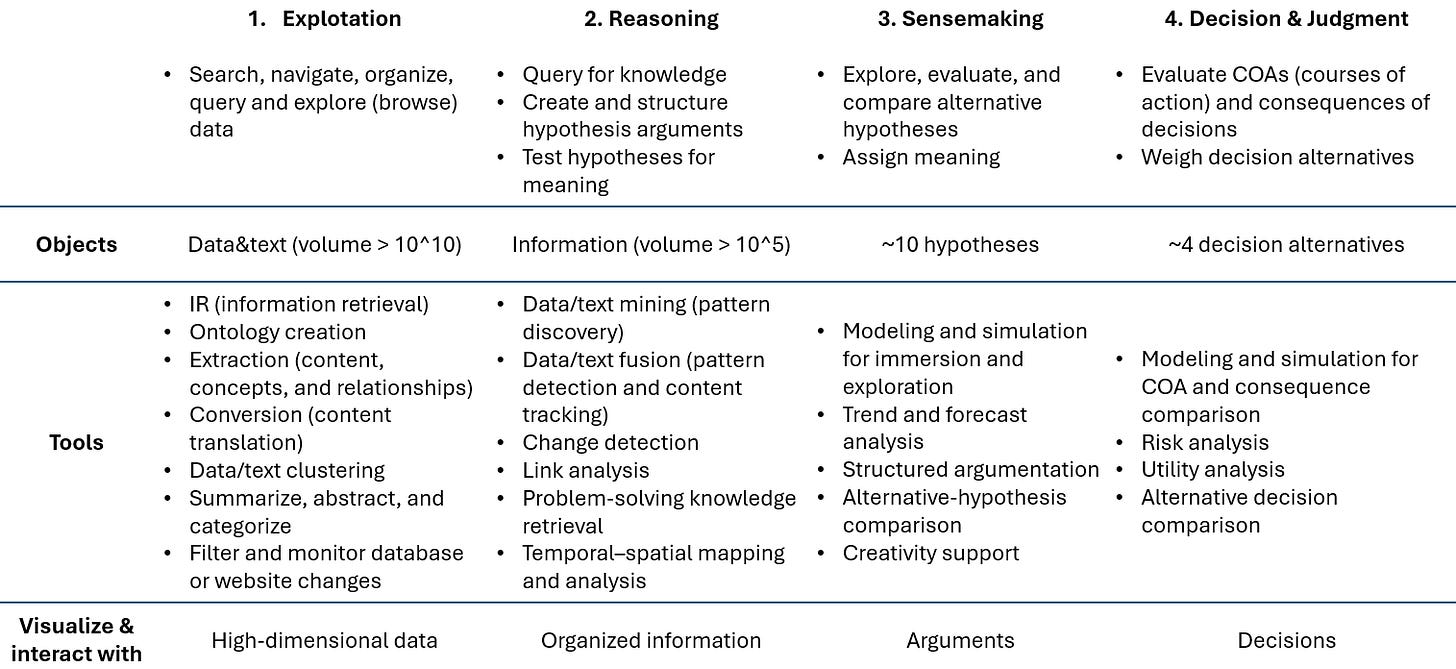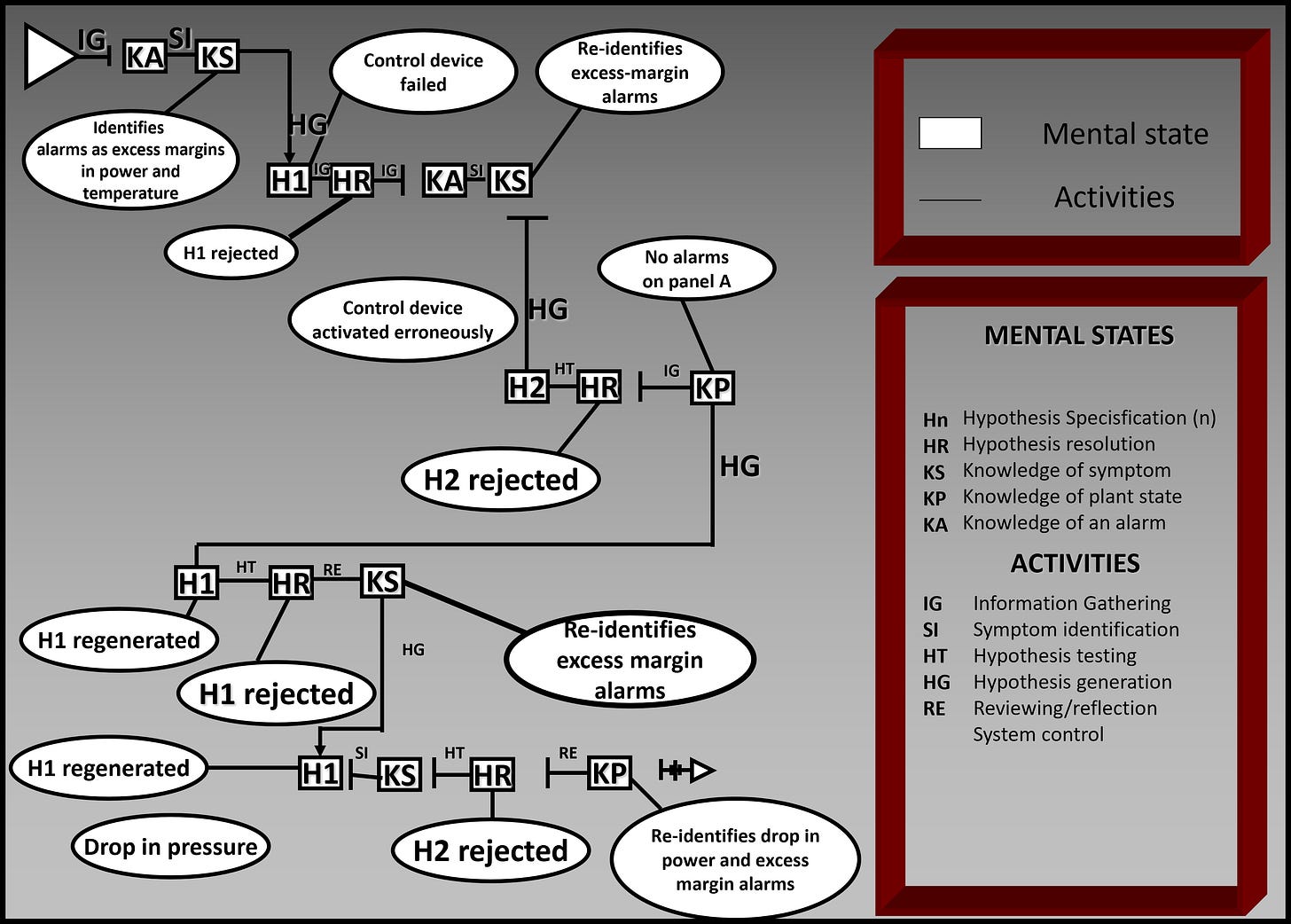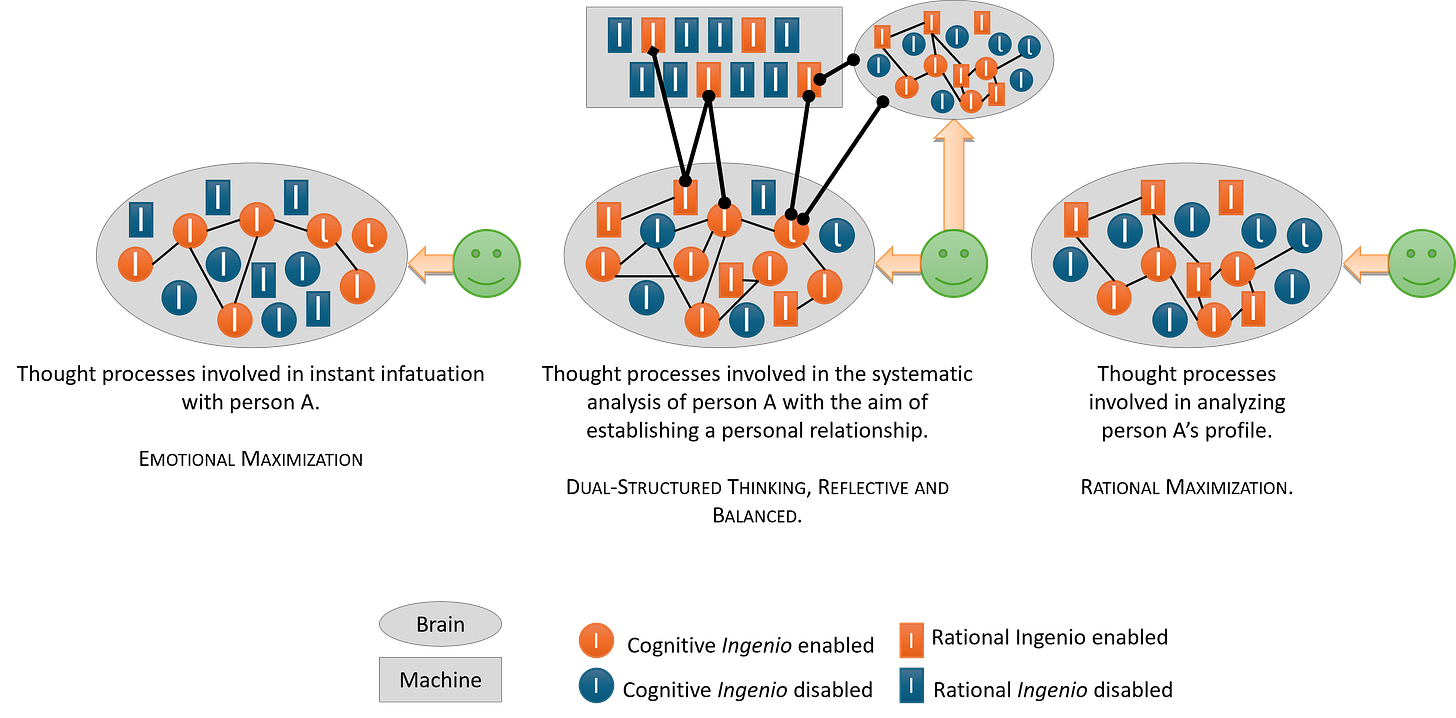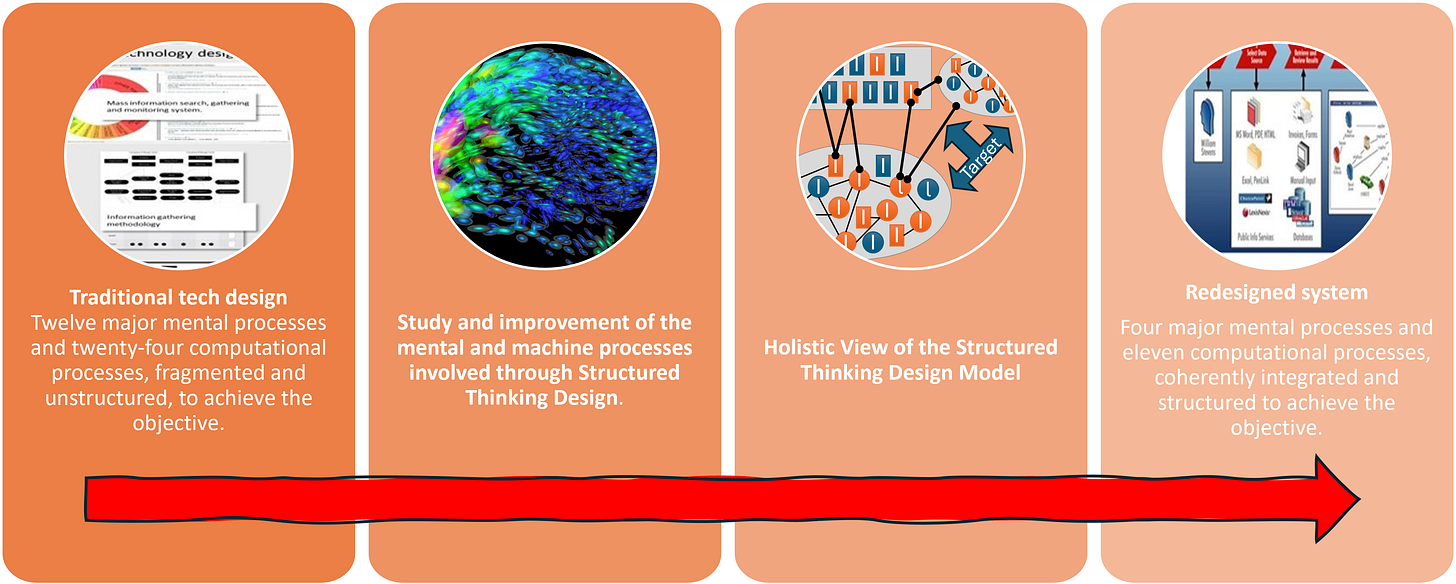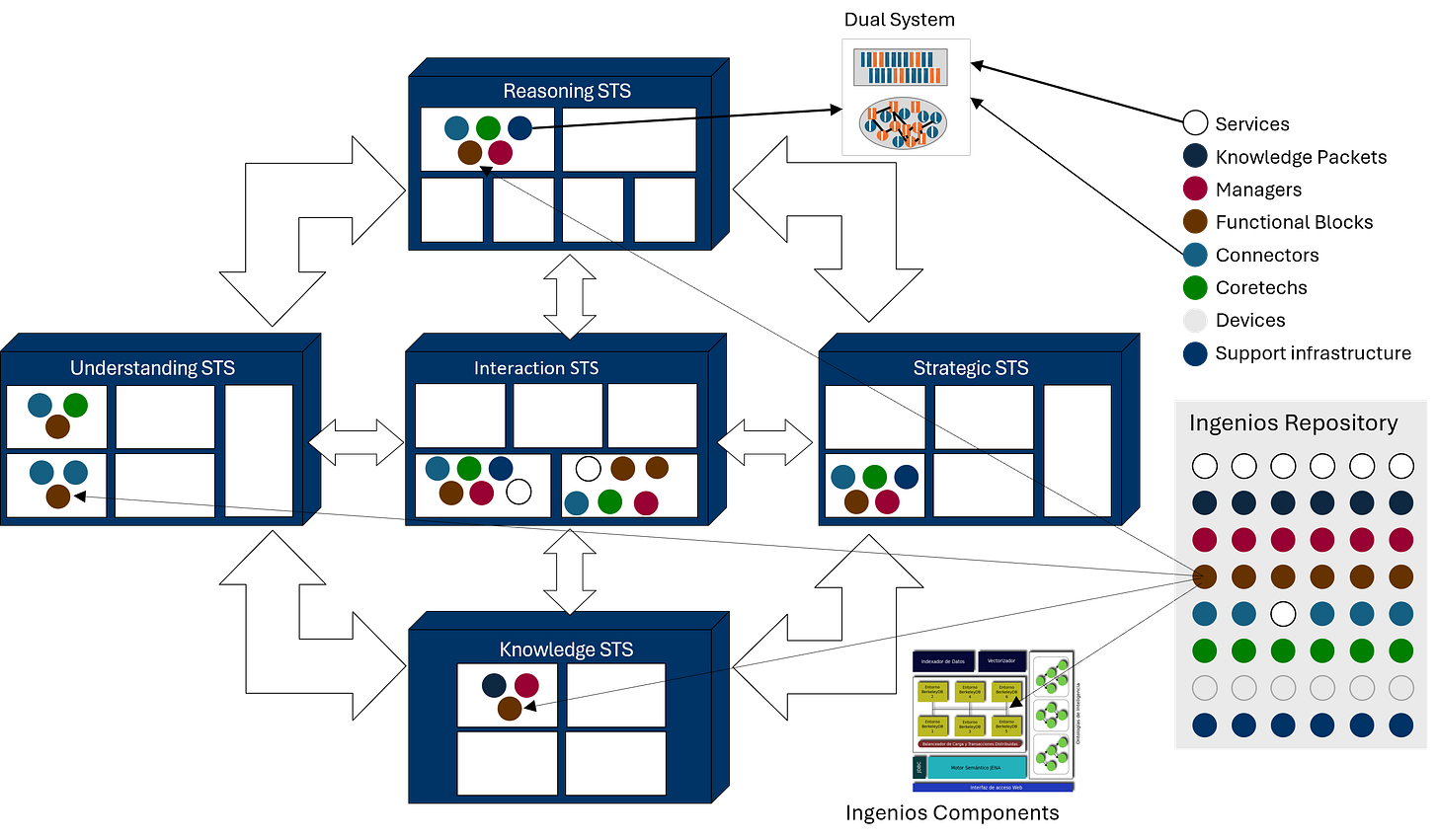Intelligent Systems Design: A neurocognitive AI approach
Gentle and altruistic behavior of AI software (GTA AI Software)
What is Intelligent Systems Design?
Intelligent Systems Design aims to build models, systems, processes, products, and services that enhance human intelligence. It enables educational programs, technological systems, and socio-technical organizations that better understand, interpret, and make sense of the real world, and that can influence it more effectively and in a more balanced way by adopting intelligent behavior.
Beyond methods, Intelligent Systems Design is self-restructuring: it intentionally reshapes how individuals and organizations perceive, interpret, act on, and influence the real world. It also promotes the development and improvement of the brain’s psychological, physiological, and biochemical structures—leveraging neuroplasticity to consolidate higher-order cognitive capabilities.
Table: General processes in a cognitive intelligent analysis system for national security.
Psychology studies intelligence primarily from a behavioral perspective. Neuroscience studies the brain’s physiology. Neurocybernetics examines the concurrent flows of energy and information. Artificial intelligence focuses on the creation and simulation of intelligent processes and systems. Intelligent Systems Design, fueled by all of these disciplines, was born with a practical design purpose.
Main goal: create high-performance intelligence in technological devices, people, and organizations.
The LMT Model
The LMT Model offers a holistic, coherent view of the key elements a designer must consider when creating intelligent systems, within a Structured Thinking Design approach. These elements provide a formal reference for building high-precision intelligence systems.
This model is based on the work of scientists and technologists from advanced institutions such as DARPA, MIT, the Redwood Center for Theoretical Neuroscience, IBM’s neurocognitive computation research, and research on complex adaptive systems from the Biosciences/Stanford ecosystem, among others.
Figure: High-level schematic of the LMT Model.
Purpose: to establish a design doctrine and a solid methodology for creating intelligent-systems solutions, rather than to define the philosophical essence of what makes a system “intelligent.” That latter task belongs to philosophers, scientists, and technologists across multiple disciplines.
From a multidisciplinary, non-sectarian perspective, the model identifies a set of systems that can form the functional basis for improving any structure or entity that seeks to understand and influence the real-world environment in which it must operate, survive, or progress.
Figure: Diagram of rational and cognitive activities in a dual intelligent system.
Within the paradigm of adaptive systems, the model proposes a hierarchy of capacities and functions that should be present—at least in part—in any complete or partial intelligent system:
Understanding the real world: capture and weigh environmental information to build situational awareness and, through sequences of analysis, infer why a situation is occurring.
Influencing the real world: formulate or refine objectives, plan and execute strategies to change the status quo, and do so in a gentle and altruistic manner—achieving objectives without undesirable side effects, learning from outcomes, and improving all capacities engaged throughout the intelligent-action sequence.
Figure: Knowledge flow in an intelligent system.
Ingenios (Cognitive and Rational Intelligent Components)
From the Intelligent Systems Design viewpoint, brain activity mobilizes resources I call Ingenios into specific configurations according to purpose. These resources support all processes triggered by internal or external stimuli, such as objectives, the results of prior thoughts, or genetic predispositions.
Two types of Ingenios:
Cognitive Ingenios: resources inherent to every human being that provide broadly shared capabilities rooted in brain physiology. They are genetically determined yet developable, naturally or deliberately.
Rational Ingenios: man-made resources that organize, optimize, and evaluate thought processes. They also enable certain tasks to be replicated across hardware, software, and wetware devices.
As Marvin Minsky observed: “Each of our major ways to think results from turning certain resources on while turning certain others off, and thus changing some ways that our brains behave.”
Figure: Neurocybernetic Basis of Dual Intelligent Software
Contrary to popular belief and to what some “gurus of simplicity” promote, the sets of cognitive and rational resources activated when a person falls in love or makes a business decision are similar in their foundations, yet differ in configuration, structure, and sequence, while other resources are deactivated.
In this sense, we can view emotions as specific thought processes aimed at strengthening other thought processes of a different sign. We will call emotions cognitive abilities for our purposes.
Intelligent Systems Design entails a global reflection on all cognitive and rational resources that must converge in a consistent configuration.
Figure: redesign of a multi-source information-retrieval system.
Intelligent Software Systems
Traditional software systems often result from a superficial analysis of organizational and human needs. They treat available technologies as endogenous, self-contained elements, expected to compensate for design shortcomings. The people in the organization become abstract “users”, with supposedly elastic capacity and patience as the development team’s capabilities shrink.
Such systems may appear cheaper to build because they skip essential design phases, reuse variations of prior developments, and lack theoretical reference models, design identity, and continuous innovation mechanisms. Their impact on organizations is usually low, which can comfort stakeholders resistant to change, since the system does not transform underlying behavior. Satisfaction is also low among sponsors and funders, due to inadequate prototyping and the absence of a formal definition of functional and technical specifications describing what the system will do and how it will do it.
The learning curve is short, but real knowledge transfer is minimal, and the system is perceived merely as a tool, not as a new way of thinking, operating, and organizing for greater efficiency and collaboration.
Traditional attributes of non-intelligent software (what we do not want)
It forgets the human.
It is lazy.
It is miserly with information.
It is inflexible.
It blames the user for its own errors and limitations.
It is not responsible.
It does not care about human goals.
It makes people feel inadequate.
It is boring.
It delays gratification.
It demands to be the center of attention and time.
It does not communicate everything it can do.
Most of what it does is misaligned with real goals.
It seduces users into objectives that do not contribute to their personal or professional growth.
GTA AI Software: Gentle and Altruistic Behavior
Two externally observable attributes of intelligence indicate its degree of evolution: courtesy and altruism.
Without entering philosophical debates, we can define courtesy as behavior that allows all participants in an interaction to feel comfortable with one another. Altruism is behavior that benefits others, is voluntary, and whose author does not anticipate direct benefit.
Attributes of “Gentle Software”
It is interested in the user.
It shows deference.
It has initiative.
It applies common sense.
It anticipates needs.
It responds in any circumstance.
It keeps internal problems private.
It stays well informed.
It is perceptive.
It maintains orientation.
It is flexible.
It provides immediate gratification when appropriate.
It is self-confident without arrogance, enabling decisive action while staying aligned with human goals.
It is trustworthy.
Attributes of “Altruistic Software”
It adapts to cultural and technological gaps.
It focuses on the user’s problems.
It endorses the user’s goals.
It strives and evolves to improve.
It detects threats and risks that may affect the user.
It informs the user about opportunities it can provide.
It becomes stronger in emergencies.
It helps people become better versions of themselves.
It offers its capabilities to other systems to add value, without seeking prominence.
Intelligent Components Model
I am working on a gradual design of a repository of Ingenios for rapid prototyping of intelligent systems. From the SAGEORS model and the Ecore architecture I created for organizational intelligent systems, I am defining hardware, software, and knowledge components that can implement different configurations of dual intelligent systems (cognitive–rational).
Figure: Dual Intelligent Components Reference Model
Figure: Dual Intelligent Software Reference Model
Contact
If you are interested in my approaches to designing intelligent systems, please contact me via LinkedIn.



